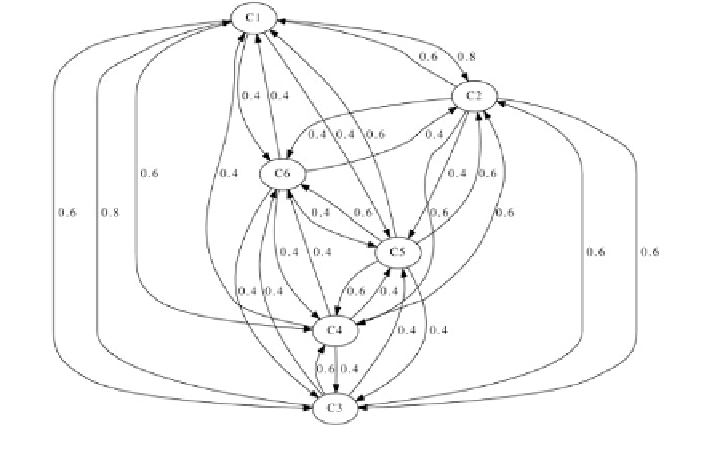Information Technology Reference
In-Depth Information
Table 2 The initial draft of
the connection matrix
C1
C2
C3
C4
C5
C6
C1
0
0.8
0.6
0.6
0.4
0.4
C2
0.6
0
0.6
0.6
0.4
0.4
C3
0.8
0.6
0
0.6
0.4
0.4
C4
0.4
0.6
0.4
0
0.4
0.4
C5
0.6
0.6
0.4
0.6
0
0.6
C6
0.4
0.4
0.4
0.4
0.4
0
This model includes the identi
cation of concept nodes and relationships among
them (Fig.
6
).
The matrix presented above indicated that each node of the FCM is connected to
each other node and the algorithm was used to set up values of connections.
The factors in the matrix are represented as follows:
C1: technical factor (collection, transport, treatment methods, etc.)
C2: environmental factor (emission of pollution, depletion of resources, human
toxicity, etc.)
C3: economic factor (subsidies, ef
ciency at system/subsystem level, economic
sound and continuous operation, coverage of all after case expenses, etc.)
C4: social factor (involving local need and requirements, minimizing public
health risk, providing employment, etc.)
C5: legal factor (EU packaging directive, EU land
ll directive, waste hierarchy,
national, regional and local regulations)
C6: institutional factor (involvement of stakeholders, existence of feedback
mechanisms of citizens, organisational structure, etc.)
Fig. 6 The initial fuzzy cognitive maps














Search WWH ::

Custom Search